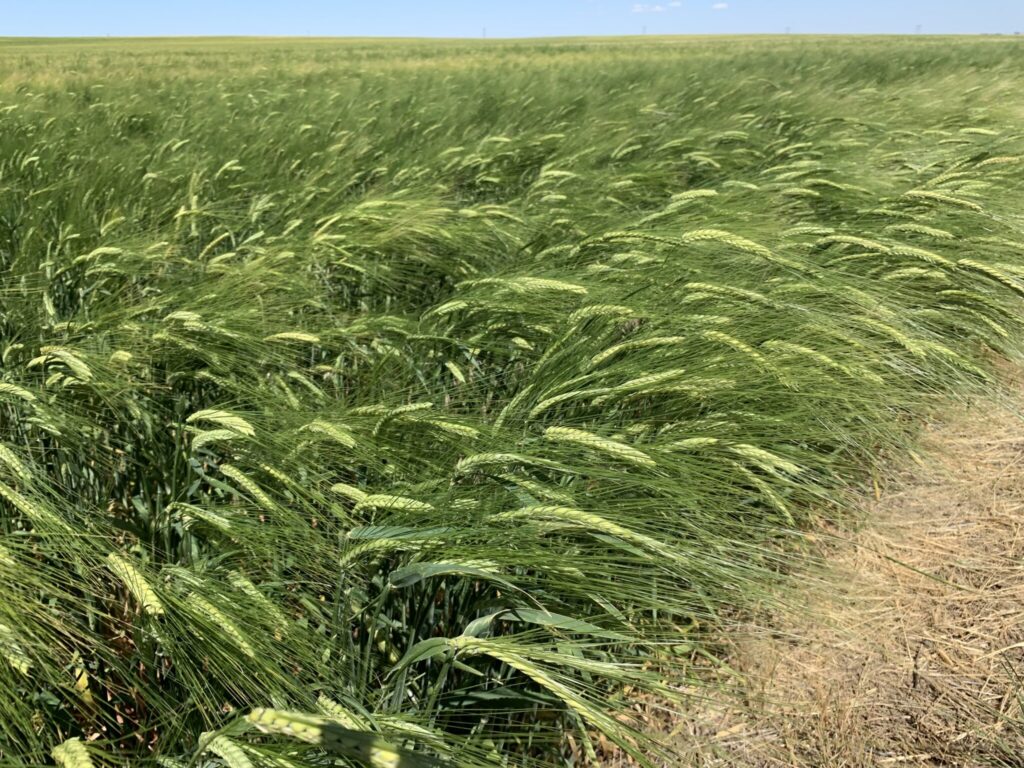A new report highlights the significant impact of climate change on Montana’s agricultural sector. The changing climate is expected to challenge the production of wheat and cattle, the state’s agricultural staples. The report titled “The Economic Impact of Climate Change on Montana Agriculture,” prepared by Power Consulting for Farm Connect Montana, was released on Thursday. It reveals that Montana’s weather patterns are expected to shift, with milder springs and autumns, rainier winters, and hotter summers.
The implications for agriculture are profound, as traditional crop production may become more difficult. However, adapting farming practices could mitigate some negative effects. The study models a “business as usual” approach, predicting average temperature increases of 6 degrees Fahrenheit by 2050. This warming trend is coupled with unpredictable moisture patterns.
The report forecasts that northwest and north-central Montana will experience 11 additional days of temperatures above 90 degrees, while other regions could see 33 more such days. This climate shift affects more than just agriculture; ski areas in Montana might lose 33 ski days per season by mid-century.
Annual rainfall is projected to increase by two inches, but more extreme weather events are expected. Unlike traditional snowpack patterns, increased precipitation will mainly occur as rain, lacking gradual snowmelt benefits. The report predicts a 50% rise in heavy rainfall events by mid-century, with fewer hail days but a 40% increase in hail damage potential due to more large hail occurrences.
For Montana farmers and ranchers, this means potential benefits like increased plant production in spring and less winter stress on cattle. However, longer, drier summers with more “very hot days” will stress crops and livestock. Water availability for cattle is expected to decline due to increased evaporation.
As temperatures rise, the quality of forage for cattle declines, with non-native invasive plants likely to spread. The report indicates a 20% decline in rangeland cattle by mid-century, paralleling trends in states like New Mexico. It projects 4,514 lost jobs and over $86 million in labor earnings from cow and calf operations by mid-century.
Montana’s wheat production is also shifting. While winter wheat yields may rise temporarily, spring wheat yields are expected to fall in most regions. The increased heat negates benefits from fertilization and moisture gains. Montana farmers are already adjusting by introducing “pulse crops” like lentils and chickpeas that enrich the soil with nitrogen.
With a predicted 20% reduction in grain crops by mid-century, the wheat, barley, and hay sector, which makes up 76% of Montana’s agricultural sales, could lose nearly 5,000 jobs and over $95 million in labor earnings. Overall, more than 9,500 jobs and $181 million could be lost due to climate change, continuing a downward trend in Montana’s agricultural economy.
Bonnie Buckingham, executive director of Farm Connect Montana, emphasized the need for adaptation. “We need to understand what effects these changes will have on agriculture,” she said. Buckingham pointed out that Montana’s innovative spirit could help farmers and ranchers adapt, stressing the importance of supporting agriculture through policies like the Farm Bill.
She acknowledged that while “climate change” can be a divisive term, most in the agricultural community recognize the changing weather patterns. “It’s not denial; we need to adapt and prepare for these changes,” Buckingham stated, noting bipartisan support for climate action among Montana’s rural legislators.





